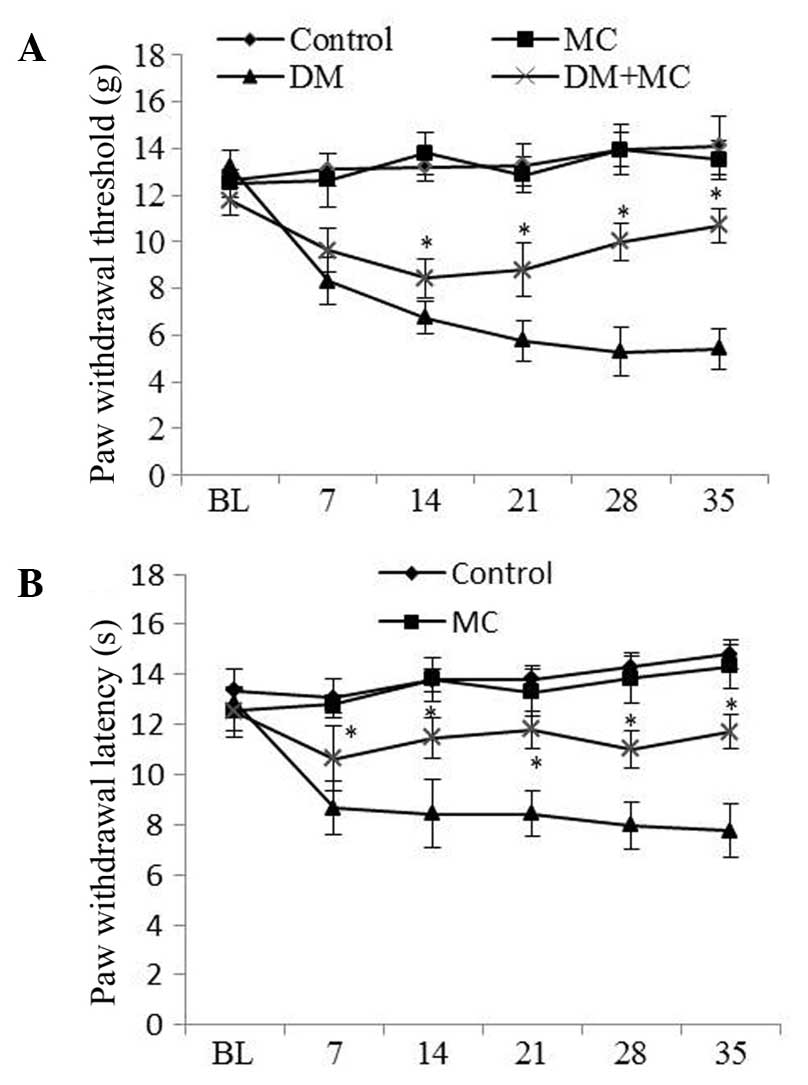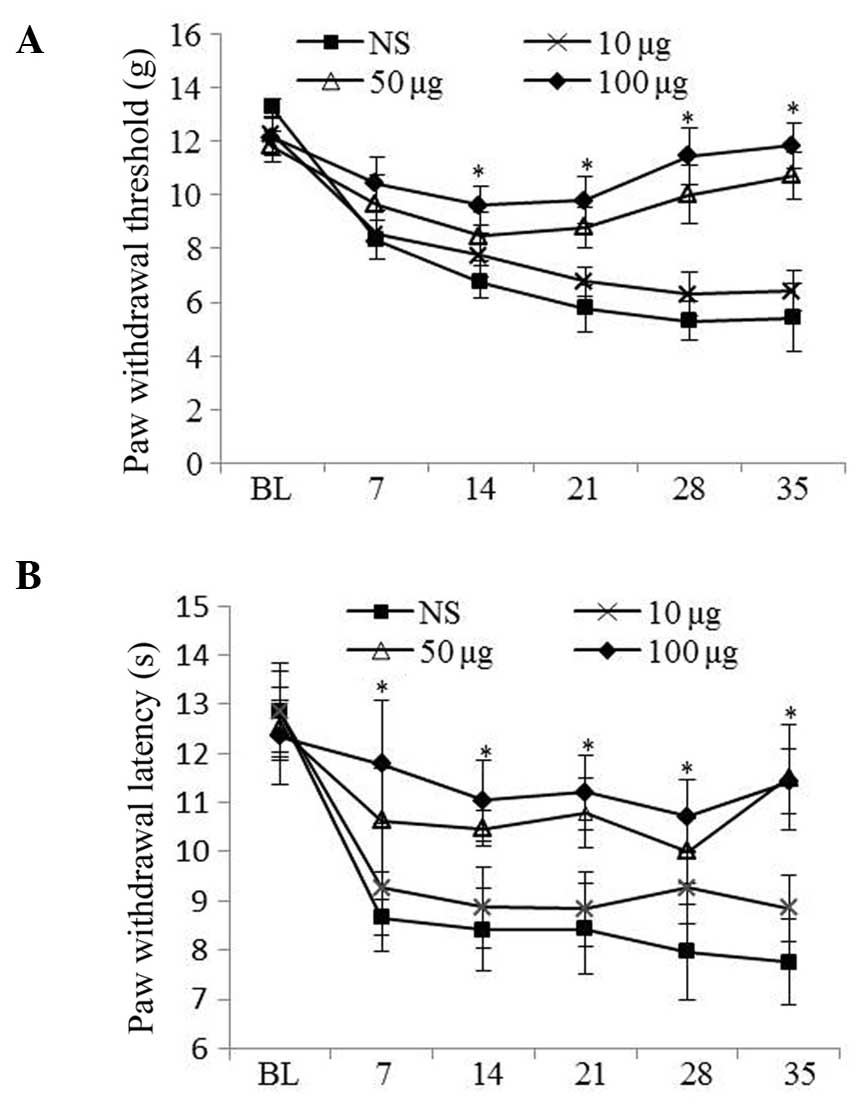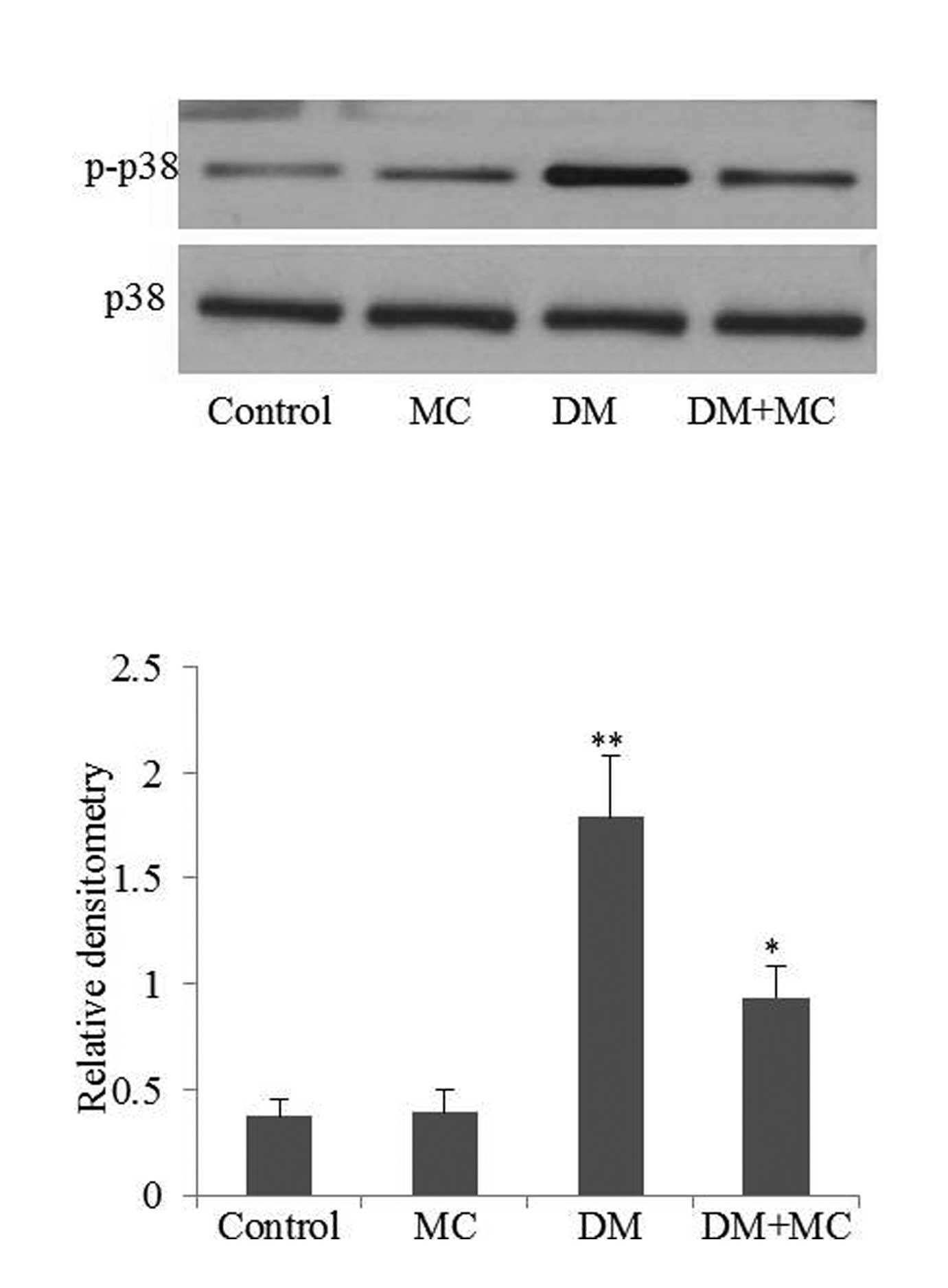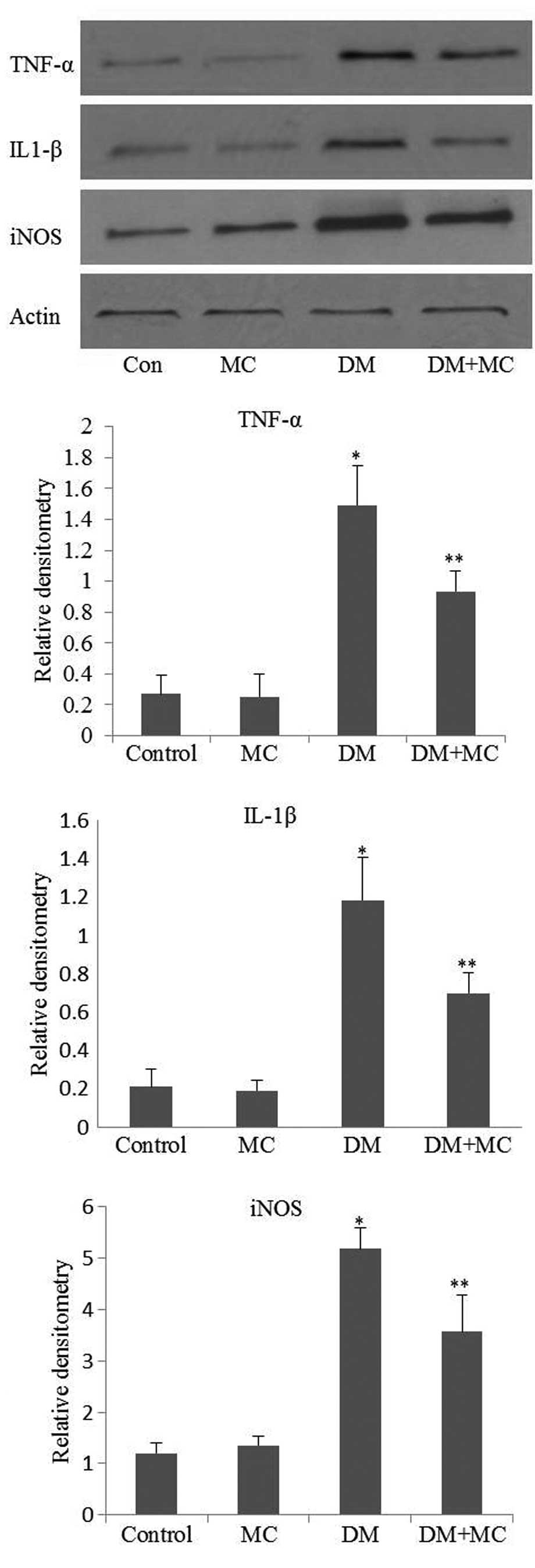|
1
|
Yagihashi S, Yamagishi S and Wada R:
Pathology and pathogenetic mechanisms of diabetic neuropathy:
Correlation with clinical signs and symptoms. Diabetes Res Clin
Pract. 77(Suppl 1): S184–S189. 2007. View Article : Google Scholar : PubMed/NCBI
|
|
2
|
Green CJ, Pedersen M, Pedersen BK and
Scheele C: Elevated NF-κB activation is conserved in human myocytes
cultured from obese type 2 diabetic patients and attenuated by
AMP-activated protein kinase. Diabetes. 60:2810–2819. 2011.
View Article : Google Scholar : PubMed/NCBI
|
|
3
|
Newsholme P, Gaudel C and Krause M:
Mitochondria and diabetes. An intriguing pathogenetic role. Adv Exp
Med Biol. 942:235–247. 2012.PubMed/NCBI
|
|
4
|
Zhang YL, Xu JM, Zhou P, Zhong XL and Dai
RP: Distinct activation of tumor necrosis factor-α and
interleukin-6 in the spinal cord after surgical incision in rats.
Mol Med Rep. 5:1423–1427. 2012.PubMed/NCBI
|
|
5
|
Ren K and Dubner R: Interactions between
the immune and nervous systems in pain. Nat Med. 16:1267–1276.
2010. View
Article : Google Scholar : PubMed/NCBI
|
|
6
|
Jung WW, Kim HS, Shon JR, Lee M, Lee SH,
Sul D, Na HS, Kim JH and Kim BJ: Intervertebral disc
degeneration-induced expression of pain-related molecules: Glial
cell-derived neurotropic factor as a key factor. J Neurosurg
Anesthesiol. 23:329–334. 2011. View Article : Google Scholar : PubMed/NCBI
|
|
7
|
Prinz M, Tay TL, Wolf Y and Jung S:
Microglia: Unique and common features with other tissue
macrophages. Acta Neuropathol. 128:319–331. 2014. View Article : Google Scholar : PubMed/NCBI
|
|
8
|
Amin AR, Attur MG, Thakker GD, Patel PD,
Vyas PR, Patel RN, Patel IR and Abramson SB: A novel mechanism of
action of tetracyclines: Effects on nitric oxide synthases. Proc
Natl Acad Sci USA. 93:14014–14019. 1996. View Article : Google Scholar : PubMed/NCBI
|
|
9
|
Leung L and Cahill CM: TNF-alpha and
neuropathic pain - a review. J Neuroinflammation. 7:272010.
View Article : Google Scholar
|
|
10
|
Naseri K, Saghaei E, Abbaszadeh F, Afhami
M, Haeri A, Rahimi F and Jorjani M: Role of microglia and astrocyte
in central pain syndrome following electrolytic lesion at the
spinothalamic tract in rats. J Mol Neurosci. 49:470–479. 2013.
View Article : Google Scholar
|
|
11
|
LoPachin RM, Rudy TA and Yaksh TL: An
improved method for chronic catheterization of the rat spinal
subarachnoid space. Physiol Behav. 27:559–561. 1981. View Article : Google Scholar : PubMed/NCBI
|
|
12
|
Ihara H, Yamamoto H, Ida T, Tsutsuki H,
Sakamoto T, Fujita T, Okada T and Kozaki S: Inhibition of nitric
oxide production and inducible nitric oxide synthase expression by
a polymethoxyflavone from young fruits of Citrus unshiu in rat
primary astrocytes. Biosci Biotechnol Biochem. 76:1843–1848. 2012.
View Article : Google Scholar : PubMed/NCBI
|
|
13
|
Nikodemova M, Duncan ID and Watters JJ:
Minocycline exerts inhibitory effects on multiple mitogen-activated
protein kinases and IkappaBalpha degradation in a stimulus-specific
manner in microglia. J Neurochem. 96:314–323. 2006. View Article : Google Scholar
|
|
14
|
Lim H, Kim D and Lee SJ: Toll-like
receptor 2 mediates peripheral nerve injury-induced NADPH oxidase 2
expression in spinal cord microglia. J Biol Chem. 288:7572–7579.
2013. View Article : Google Scholar : PubMed/NCBI
|
|
15
|
Nikodemova M, Watters JJ, Jackson SJ, Yang
SK and Duncan ID: Minocycline down-regulates MHC II expression in
microglia and macrophages through inhibition of IRF-1 and protein
kinase C (PKC)alpha/betaII. J Biol Chem. 282:15208–15216. 2007.
View Article : Google Scholar : PubMed/NCBI
|
|
16
|
Gao YJ, Xu ZZ, Liu YC, Wen YR, Decosterd I
and Ji RR: The c-Jun N-terminal kinase 1 (JNK1) in spinal
astrocytes is required for the maintenance of bilateral mechanical
allodynia under a persistent inflammatory pain condition. Pain.
148:309–319. 2010. View Article : Google Scholar :
|
|
17
|
Wei F, Guo W, Zou S, Ren K and Dubner R:
Supraspinal glial-neuronal interactions contribute to descending
pain facilitation. J Neurosci. 28:10482–10495. 2008. View Article : Google Scholar : PubMed/NCBI
|
|
18
|
Choi JI, Svensson CI, Koehrn FJ, Bhuskute
A and Sorkin LS: Peripheral inflammation induces tumor necrosis
factor dependent AMPA receptor trafficking and Akt phosphorylation
in spinal cord in addition to pain behavior. Pain. 149:243–253.
2010. View Article : Google Scholar : PubMed/NCBI
|
|
19
|
Ren K: Emerging role of astroglia in pain
hypersensitivity. Jpn Dent Sci Rev. 46:862010. View Article : Google Scholar : PubMed/NCBI
|
|
20
|
Weyerbacher AR, Xu Q, Tamasdan C, Shin SJ
and Inturrisi CE: N-Methyl-D-aspartate receptor (NMDAR) independent
maintenance of inflammatory pain. Pain. 148:237–246. 2010.
View Article : Google Scholar :
|
|
21
|
Gao X, Kim HK, Chung JM and Chung K:
Reactive oxygen species (ROS) are involved in enhancement of
NMDA-receptor phosphorylation in animal models of pain. Pain.
131:262–271. 2007. View Article : Google Scholar : PubMed/NCBI
|
|
22
|
Yowtak J, Lee KY, Kim HY, Wang J, Kim HK,
Chung K and Chung JM: Reactive oxygen species contribute to
neuropathic pain by reducing spinal GABA release. Pain.
152:844–852. 2011. View Article : Google Scholar : PubMed/NCBI
|
|
23
|
Mollace V, Muscoli C, Rotiroti D and
Nisticó G: Spontaneous induction of nitric oxide- and prostaglandin
E2-release by hypoxic astroglial cells is modulated by interleukin
1 beta. Biochem Biophys Res Commun. 238:916–919. 1997. View Article : Google Scholar : PubMed/NCBI
|
|
24
|
Purwata TE: High TNF-alpha plasma levels
and macrophages iNOS and TNF-alpha expression as risk factors for
painful diabetic neuropathy. J Pain Res. 4:169–175. 2011.
View Article : Google Scholar : PubMed/NCBI
|














